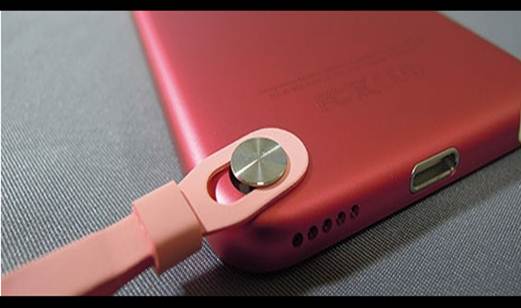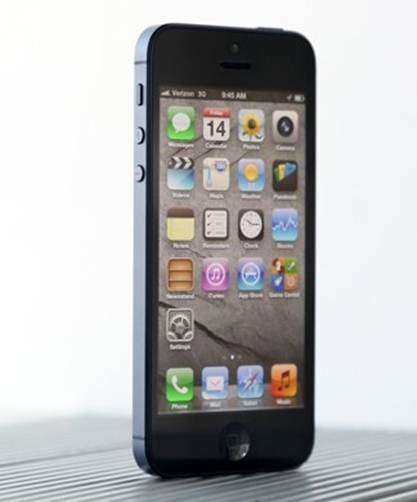iPods and accessories late as iPhone
shipments fall short of demand
APPLE’S SUPPLY CHAIN, seen as the company’s secret weapon against its competitors during
CEO Tim Cook’s earlier tenure as chief operating officer, appears to be
struggling to meet its manufacturing requirements as it squeezes a number of
long-anticipated product launches into the pre-Christmas window. Meanwhile, the
last-minute switch to a completely redesigned docking port for all new iOS
devices has left third parties unable to sell compatible add-ons to buyers
whose existing accessories can only be connected with adaptors that Apple
hasn’t shipped.

The
lightning connector suits ultra-thin devices iPod touch but requires all-new
accessories licensed under Apple's MFi programme
At the time of writing, no UK consumers had
taken delivery of the new iPod touch or nano, which had been offered as ‘Buy
now’ (not ‘Pre-order’) items from the online Apple Store for weeks. Despite no
announcement being made of varying launch schedules for different territories,
when the new models appeared on shelves in Apple Stores in Hong Kong in the second
week of October, UK buyers were just beginning to receive estimated delivery
dates still ten days away. UK Apple Stores were displaying the
previous-generation iPods, officially superseded since 12 September.
Third-party accessories for Apple’s new Lightning
adaptor, the much improved but incompatible replacement for the cumbersome
decade old 30 pin Dock, may not be available before Christmas. The compact
all-digital connector presents new engineering challenges which manufacturers
have had no time to address, because Apple released no details until the 12
September announcement of the iPhone 5. Rival prototypes of ports with
different pinouts were still circulating shortly before the event.
EXACERBATING THE PROBLEM, Apple has reportedly tightened up its MFi (Made for
iPhone/iPod/iPad) licensing guidelines. One of the new rules is that only
manufacturing facilities approved by Apple can be used to assemble MFi
accessories. Apple hasn’t yet approved a single factory. The company plans to
hold a seminar for manufacturers in China next month, but that timetable means
approving facilities in time to fulfill pre-Christmas shipments is unlikely.
Even Apple has been slow to deliver its own
Lightning accessories, including adaptors to enable the new iPhone and iPods to
connect to add-ons designed for the existing 30-pin Dock. As MacUser went to
press, the first orders, placed in September, were just being fulfilled. This
has left iPhone 5 owners dependent on the standard Lightning to USB cable to
charge their device, and unable to use them with existing products such as
wired speakers. It’s still unclear if any solutions will be available to
convert in-car docking systems.

The
iPhone 5
The slow arrival of the iPods coincided
with a widely reported production problem for suppliers of the iPhone 5’s new
in-cell display panel. The San Jose Mercury News said difficulties in
manufacturing the screen had cost Apple more than a million orders in the first
week. ‘Facing significant production constraints due to a move toward in-cell
display technology,’ Barclays analyst Ben Reitzes wrote in a note to clients,
‘Apple is struggling to keep up with demand.’
PROBLEMS WITH DISPLAYS are also believed to have help up the launch of the iPad mini,
which had been expected earlier, and a 13in MacBook Pro with Retina display.
According to analyst Ming-Chi Kuo, who correctly predicted that Apple would
kill off the 17in MacBook Pro and sell the 15in Retina MacBook Pro alongside
non-Retina models, the company had hoped to releases a 13in version at WWDC in
June. Low yields from the production line, however, forced its release to be
put back. Manufacturing problems were also responsible for delaying the iPad
mini, according to Brian White of Topeka Capital Markets. White had predicted a
7.85in device would appear in June, but earlier this month wrote that his team
‘sensed that suppliers have found the specs to be a challenge and yields have
been frustrating.’ Many sources tipped 17 October as the final launch date.

A
13in MacBook Pro with Retina display
It’s also notable that Apple had still to
announce a desktop Mac featuring Intel’s Ivy Bridge chipset six months after it
became available. The previous update to the iMac and Mac mini was in mid-2011,
and constrained supplies of the iMac fuelled rumours of an update in July,
which was not forthcoming. The Mac Pro had a minor internal upgrade in the
summer, its first in nearly two years, but professional Mac users have become
increasingly concerned about the lack of progress although Tim Cook has
mentioned plans for a major update in 2013.
Seen alongside iOS 6’s Maps controversy and
increasing delays in approving submissions to the App Store, the manufacturing
problems could give the impression of a company whose growth is outstripping
its management capability an obvious risk for what was described by late CEO
Steve Jobs as ‘the world’s biggest stratup.’
While supply is a problem for Apple, demand
remains strong: ‘Despite the media attention surrounding both the Maps issue
and the Lightning port issue, neither has had an impact on the massive numbers
of buyers queuing up to buy the iPhone 5,’ found market research company
ChangeWave. To meet all these customers’ expectations, Apple perhaps needs
another Tim Cook to step into the shoes he left vacant when he took on the role
of CEO in the absence of another Jobs to free him up.